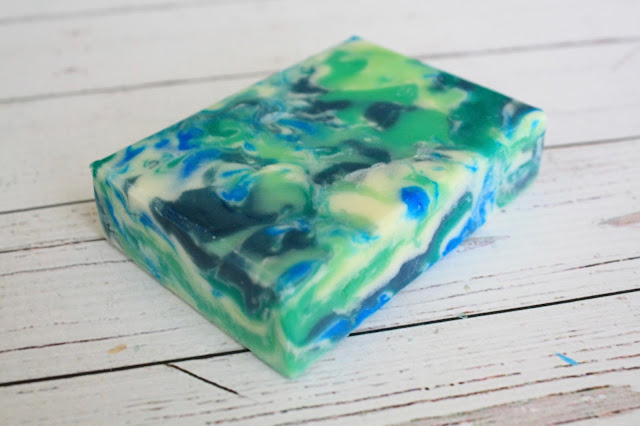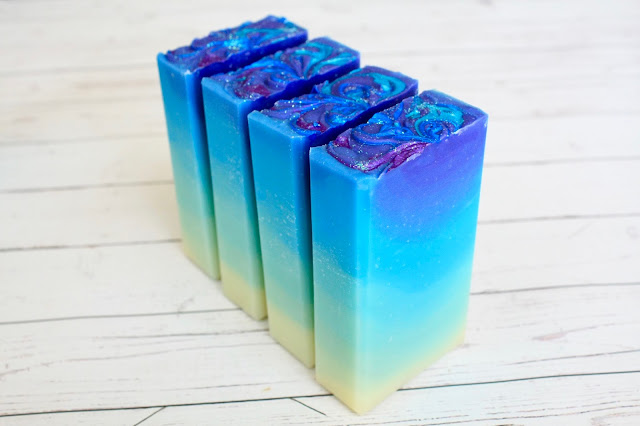I didn't get a chance to try out the August soap challenge due to being out of town, but I was very intrigued by the September challenge! Finding the time was still difficult, so I only attempted this challenge once.
I had some unused clear 70mm plastic ornaments that I had originally bought for bath bomb molds. I made 4 soaps at once - 2 flowers and 2 sea urchins. I was planning to use multiple colors for both. The mold on the bottom left in the picture below shows the reference points that I had drawn for the sea urchin. The dots ended up being completely pointless and unhelpful because I couldn't see them while injecting cold process soap! The mold to the top right was for the flowers.
I made all four soaps in the same batch, but worked on the sea urchins first. I used a melon baller to scoop out a dome for the body. My intent was to have different colored spines. I used light purple soap, neon magenta, and regular purple. I didn't need any gelatin art tools for this, just a needle & syringe.
The light purple didn't show up very well, unfortunately. I'd recommend vibrant colors only for 3D jelly soaps. It was also difficult to make the spines different lengths, as it's hard to gauge how far in the needle was going. I ended up not paying attention to the dots I had drawn on the mold and just freehanded the spines.
I topped them off with turquoise colored M&P, which I think captures an ocean theme wonderfully.
Moving on to the flowers! I used a gelatin art tool to form the petals. I think I bought the same kit that everyone else did haha. I used different colors for the different rows of petals (light purple, magenta, red & purple) and topped it off with a light green M&P layer. The reference marks on the mold were more applicable for the flowers, even though visibility was still hard. Helene's tutorial was also very helpful! I was pleasantly surprised with how my flowers came out. :)
On a side note, I had no idea that these 3D jelly soaps would be SO messy. I feel like I went through a roll of paper towels trying to clean the tools and oozing cold process batter off the soap, haha. Photography was also tricky, because these bad boys like to reflect everything!
Thank you Amy and Helene for hosting this challenge!



















































